If you struggle to convert customers despite heavy marketing spend, you may be spending on the wrong channels. Marketing attribution can solve this problem for you.
In this article, we will explain what marketing attribution is and how it can help you focus your marketing efforts on channels that drive the most conversions. By the end of it, you’ll clearly understand how to improve your marketing strategy and budget better for future campaigns. Let’s get right to it.
Article Shortcuts:
- 6 Types of Marketing Attribution Models You Need to Know
- 5 Common Challenges of Marketing Attribution
- How to Choose the Best Marketing Attribution Model
What Is Marketing Attribution?
Marketing attribution refers to the process of identifying and assigning value to each touchpoint your customer interacts with on their journey to purchase. It helps you understand which channels, marketing campaigns, or messages contribute the most to conversions so you can focus your time and money on those.
For example, a customer sees your Instagram ad, visits your website from a blog post, and then completes a purchase through a promotional email.
Why Is Marketing Attribution Important?
Using a marketing attribution tool can make your marketing efforts 15-30% more efficient. It can:
- Understand which channels deliver the best ROI to allocate budgets better.
- Insights from marketing attribution data help refine and enhance future marketing campaigns.
- Understand the customer journey to personalize marketing efforts. For example, if data shows that customers engage most with an email campaign, you can customize email content based on their interactions and purchase history.
- It provides concrete data about your marketing efforts’ success, helping you make data-driven decisions and reducing guesswork in marketing strategies.
6 Types of Marketing Attribution Models You Need to Know
As you go through these models, ask yourself the following questions: Which model best matches how my customers interact with my marketing channels? Can I implement a new model to learn about marketing efforts better?
1. First-Touch Marketing Attribution
This attribution model assigns 100% of the credit for a conversion to the first interaction a customer has with your brand, regardless of any subsequent interactions the customer may have had before completing the conversion.
It just requires basic tracking capabilities built into standard marketing and attribution tools like Google Analytics without requiring extensive customization or advanced technical skills.
How it works:
Let’s understand with an example. A company that sells fruit trees and exotic plants online, uses various marketing channels to promote its products, including paid organic search ads, social media exposure, email marketing, and content marketing. They track the journey of a customer, John, and find this data:
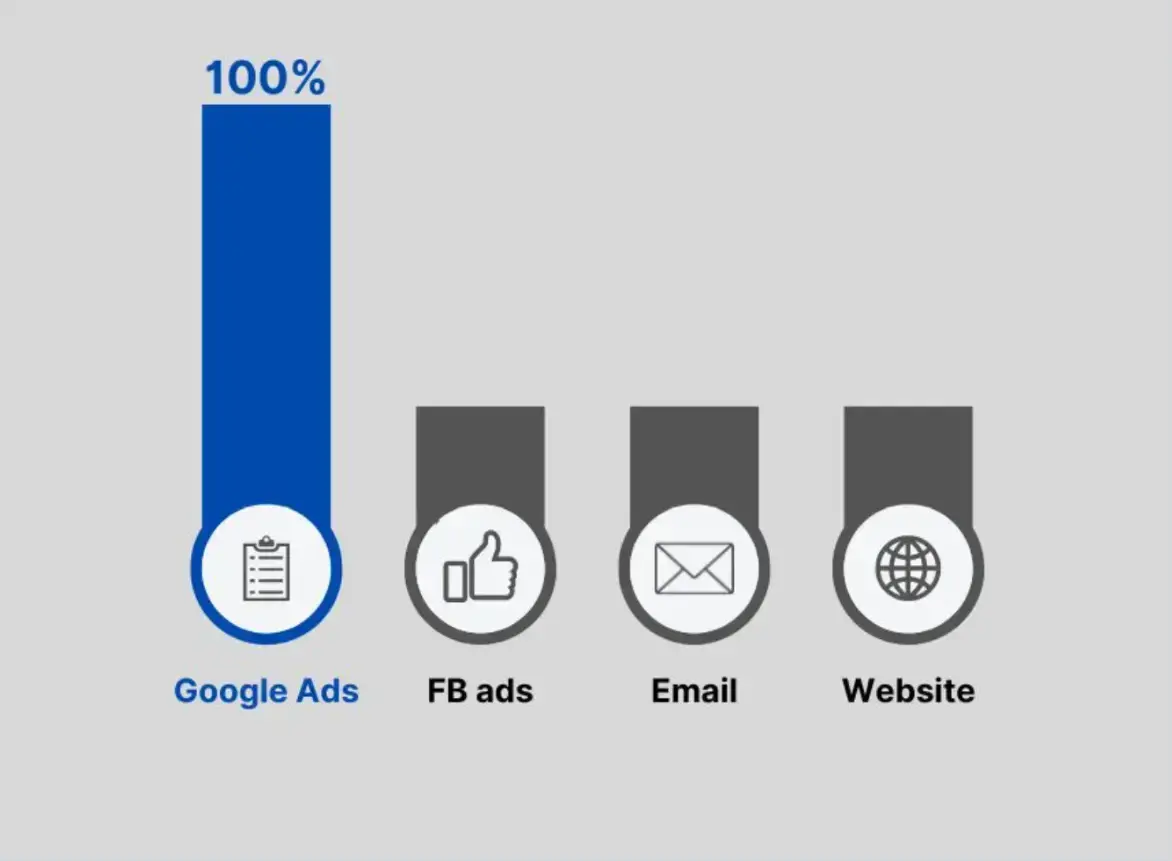
- First interaction: John is searching for native berries on Google. He clicks on the first website in the Google SERPs. He browses through the website but doesn’t make a purchase.
- Second interaction: 2 days later, John is on Facebook and sees an ad again from the same company. He clicks on the ad and visits the website again. He browses a few products but still doesn’t buy anything.
- Third interaction: John signed up for their newsletter during his previous visit. He receives an email with a discount offer and clicks the link to the website. He adds the berry bush to his cart but decides to think about it a bit more.
- Final Interaction: A week later, John decides to purchase the berry bush. He directly types the website’s URL into his browser and completes the purchase.
John goes through four marketing channels: organic search results, Facebook Ads, email marketing, and direct traffic to the website.
Here, the first touch marketing attribution model would attribute 100% of the credit for John's purchase to the organic search result because that’s when he first learned about the brand.
He might not have clicked on the Facebook ad if it wasn't his second time seeing the brand name within a short period. But what if his initial Google search occurred weeks or months before he encountered the Facebook ad? It’s unlikely he would remember his first visit to the website.
In such cases, consider the lookback window. It answers how far back we should track interactions when analyzing the conversion path, depending on the product and purchase cycle.
Google Analytics defaults to a 30-day lookback window, but this is customizable for up to 90 days.
An excellent example of this (first interaction) is Raintree Nursery, which appears as the top search result when you type in the keyword “buy berry bush online.”

Raintree Nursery uses several other marketing channels, like Facebook, Instagram, YouTube, and email marketing, but the nature of its business makes organic traffic a particularly valuable touchpoint for first interactions.
This is largely because customers begin their plant purchasing journey with specific searches like John did.
Carrying out first-touch attribution can help Raintree recognize organic traffic as a key driver in their marketing strategy. This helps them allocate more funds to SEO efforts to attract and retain customers.
But Raintree already has an established presence.
To achieve this level of visibility for your business, you need to not only focus on SEO efforts but also spend significant time improving the aesthetics and functionality of your website.
It takes years of dedicated effort to get there, especially if you’re doing it all by yourself. It's best to partner with a web design agency that has a deep understanding of both good design and SEO to speed up the process.
CliqueStudios builds this credibility by using case studies and testimonials from past clients to pitch and persuade new clients. That’s an excellent example of how a web design company can prove its past success to onboard new clients. Without proven results, do not trust anyone with your marketing efforts.

Source: Clique
Before you choose first touch attribution for your business, remember that it considers only the initial interaction and not the subsequent interactions that may also contribute to converting a prospect into a customer. As a result, you can overlook more important touchpoints and misallocate funds.
Many marketing experts use multi-touch attribution models or other marketing attribution techniques to get a better view of their marketing efforts.
2. Last-Touch Marketing Attribution
This model assigns 100% of the credit for a conversion to the final interaction a customer has with a brand before making a purchase. Under this model, the direct traffic channel (John typing the URL directly) gets the conversion credit.
Most platforms, including Google Analytics, default to giving credit for the sale to the last touch.

However, it does not account for the influence of earlier interactions that may have significantly influenced the customer’s decision-making process.
Because of this, you may over-invest in closing channels while undervaluing the importance of brand awareness and nurturing campaigns.
You will also have an incomplete understanding of the customer journey and the overall effectiveness of various marketing efforts. Here’s how you can access attribution reports in Google Analytics:
- Set goals like purchasing or signing up for a newsletter in GA4.
- Go to Conversions > Attribution > Model comparison tool.
- Select the goal you want to see data for under the Conversion drop-down menu.
- Set the lookback window according to your preferences and the model type as Last Interaction. You’ll see the last touch conversions grouped by channel.
3. Linear Attribution
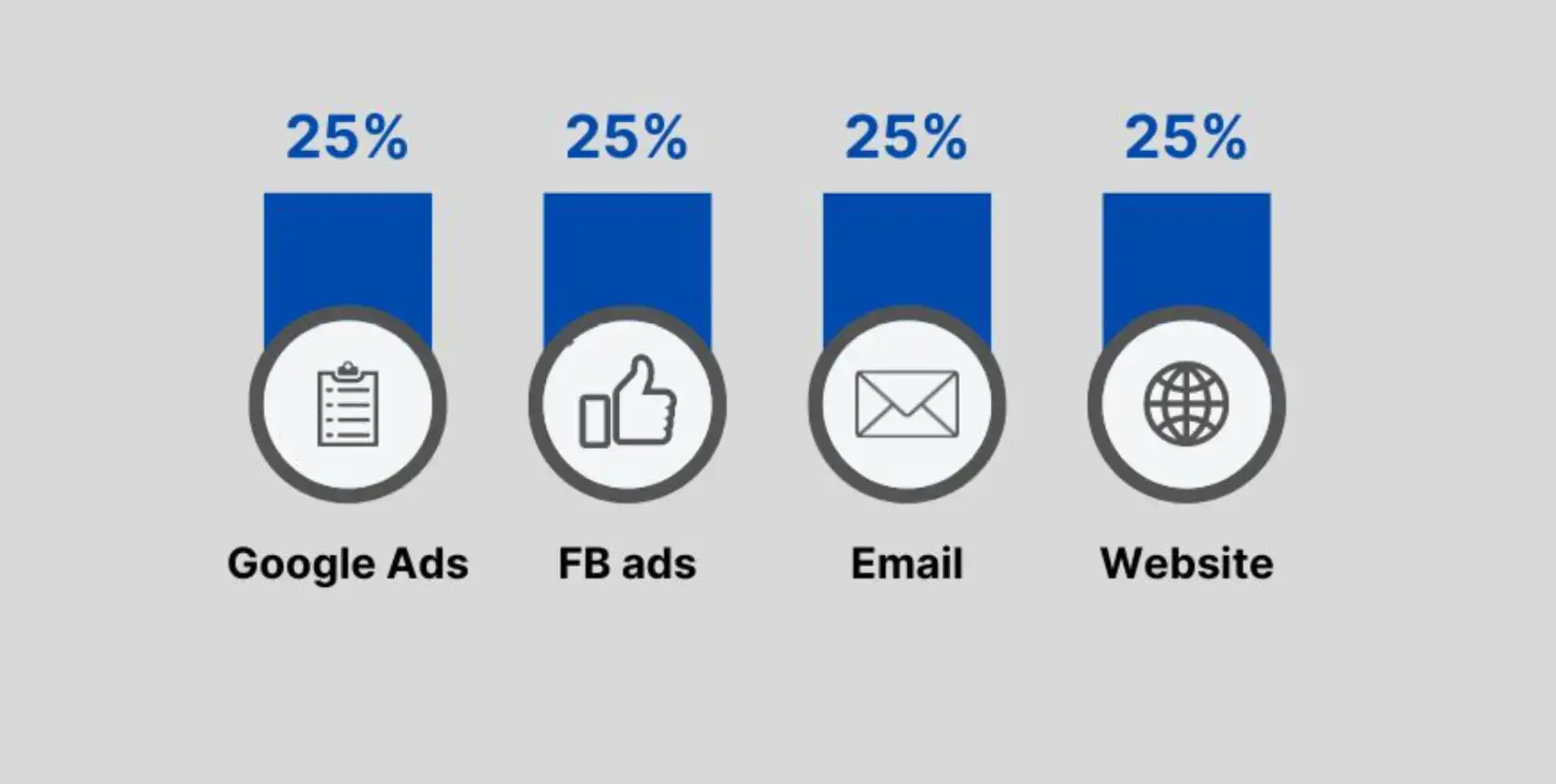
It distributes credit for a conversion equally across all touchpoints in a customer's journey. If a customer engages with 4 different marketing channels before a purchase, each channel will receive 25% of the credit. It:
- Values each touchpoint equally and does not leave out any.
- Helps understand the overall customer journey and the role each touchpoint plays in driving conversions.
- Helps make informed decisions on budget allocation across different marketing channels.
However, this model is oversimplified and does not consider the many ways different marketing touchpoints influence the decision to convert.
For example, a customer might see multiple Facebook ads from a job search company and never click on them. However, a single UGC promotion video from someone who claims to have found their dream job through the agency after months of searching can influence them to convert.
In this case, the UGC channel deserves nearly all the credit for the conversion.
But if you were to use a linear attribution, you'd keep spending more on paid ads when you really should be allocating more funds to UGC promotional content for your type of business.
An excellent example of a company using UGC content to draw in customers is Prosple. They create fun, engaging content on TikTok, mainly for fresh graduates, and some of their videos have more than 100K views.
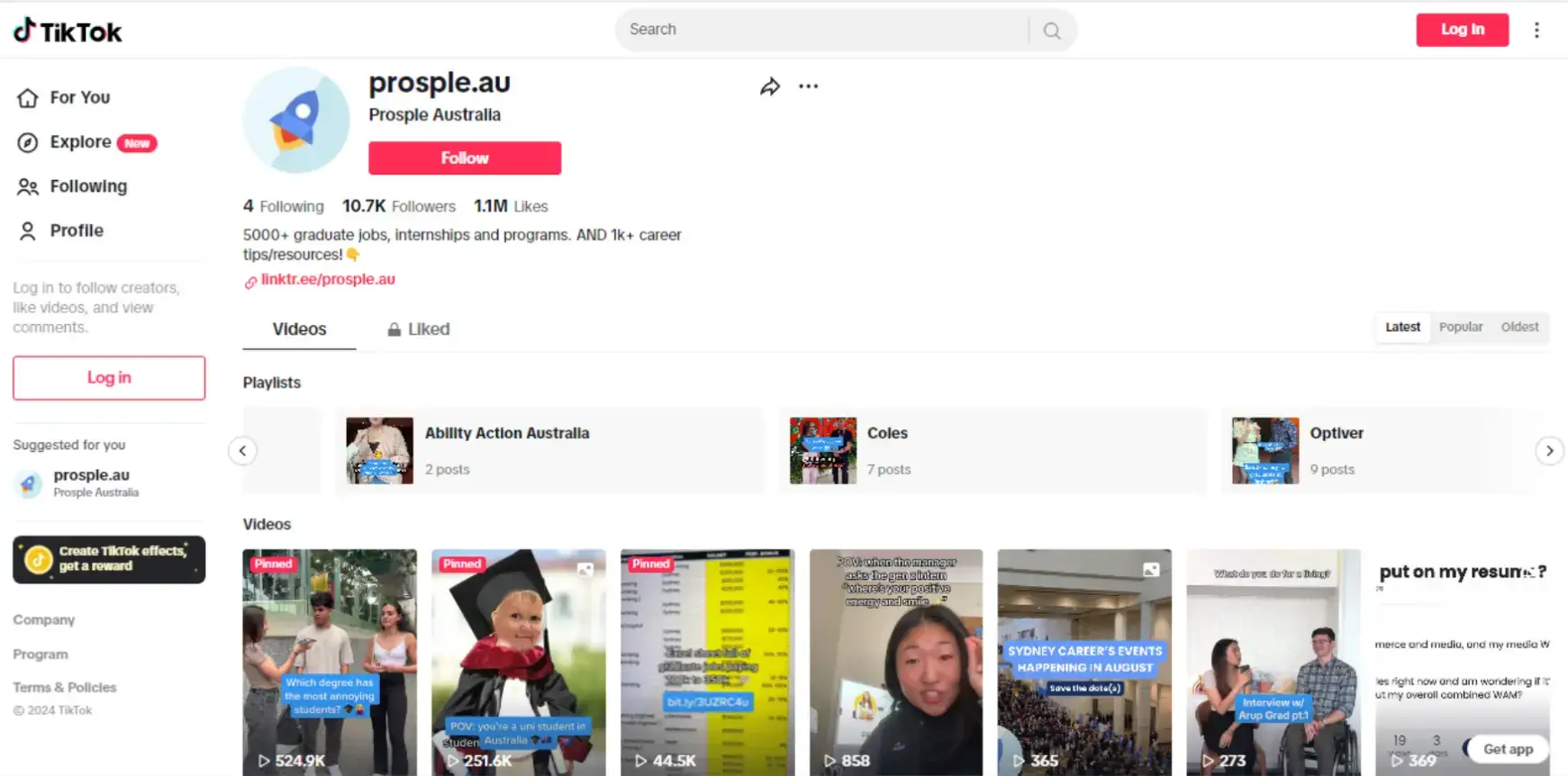
Source: TikTok
To view linear touchpoint reports, select Linear as the model type in GA4.
4. Time Decay Marketing Attribution
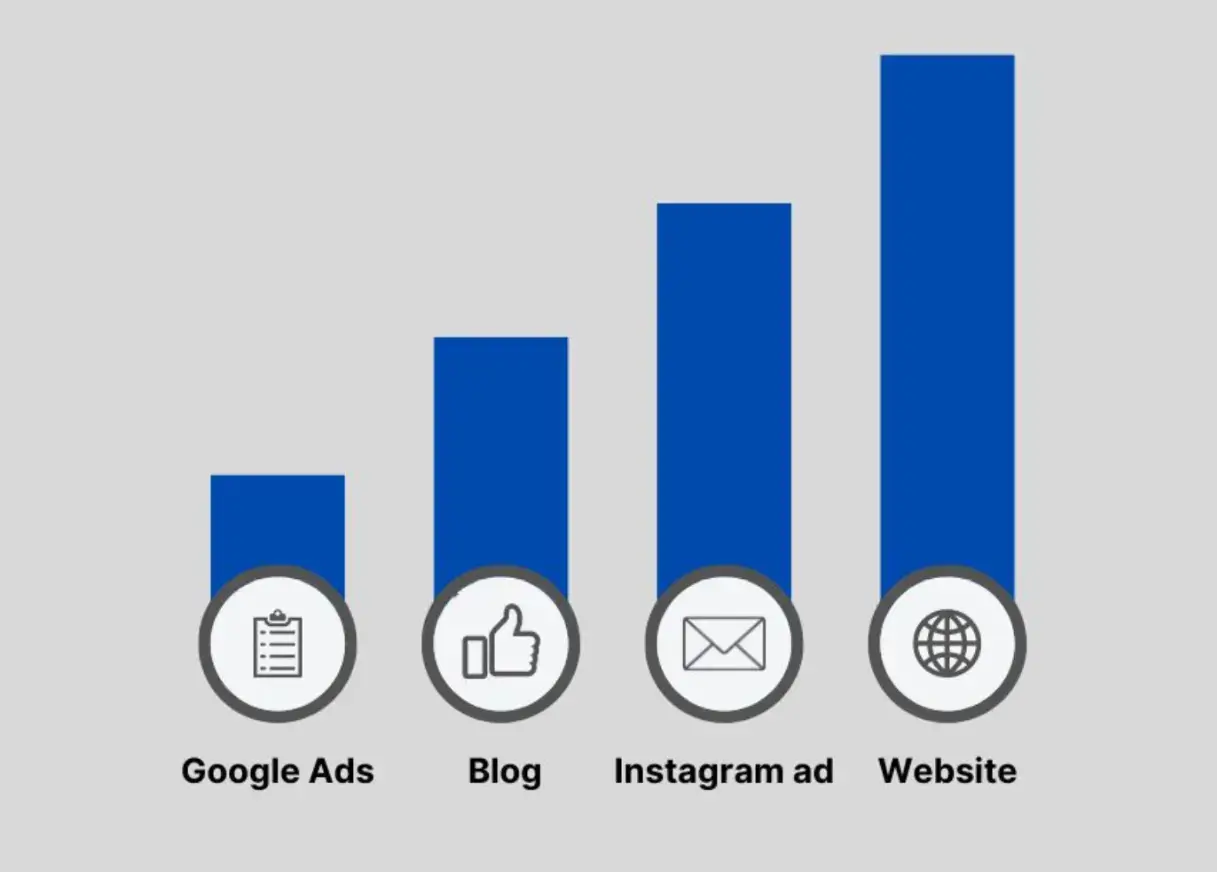
lt assigns more credit to marketing-specific touchpoints that occur closer to the time of conversion, assuming that the most recent interactions are more influential in driving conversion.
Let’s say you’re searching for the best website designers in your region. You click on the first sponsored ad you see and quickly exit the website without interacting.
A week later, you see a blog post making a case for a website redesign by the same company. You read the post and spend some time on their website. You decide to contact them but delay it.
3 days later, you see an Instagram ad featuring an aesthetic video showcasing a case study on how they helped a client. You suddenly remember your redesign goal, visit their site again, and give them a call to discuss your redesign needs.
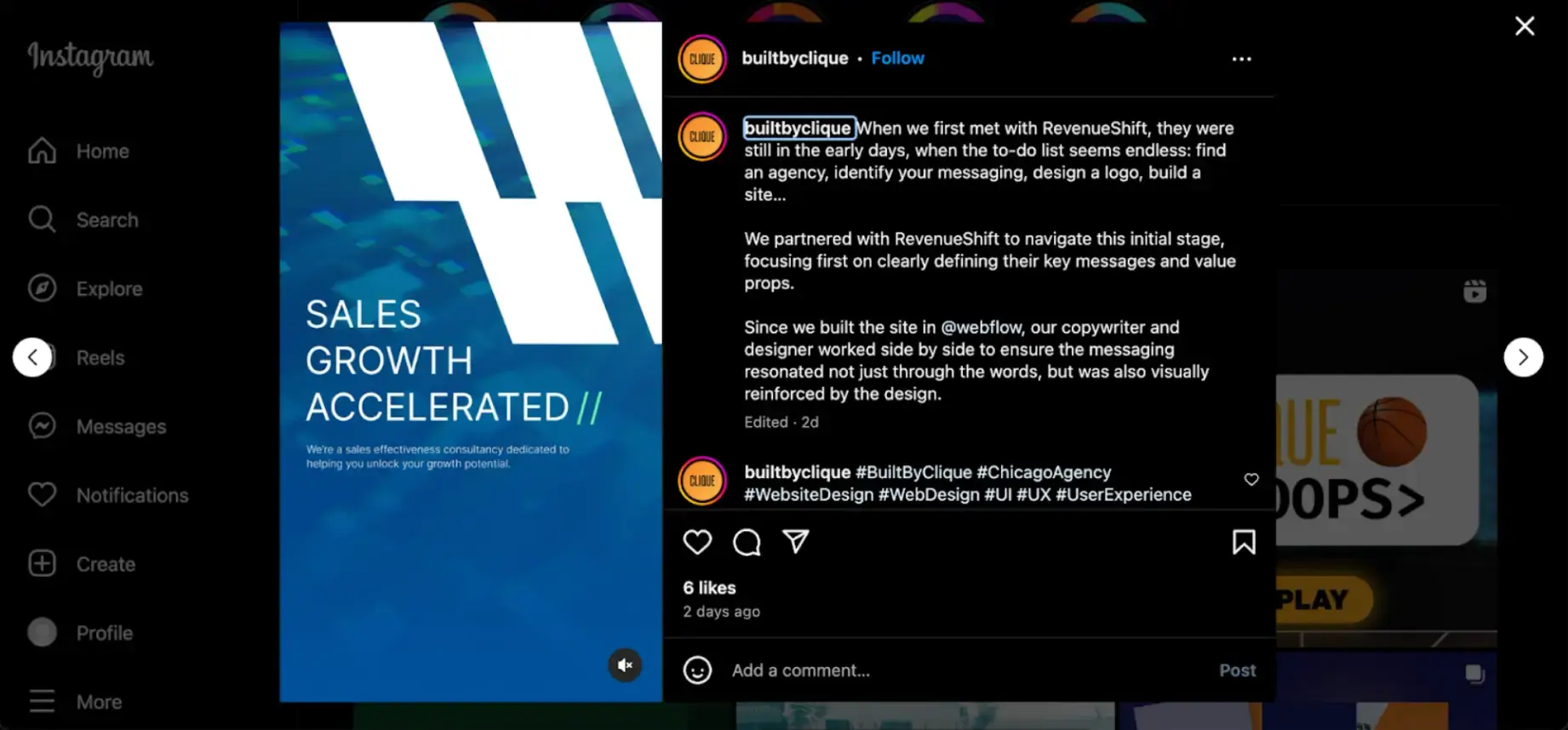
Source: Instagram
In this scenario, the social media ad would receive the most credit, followed by the blog post 3 days ago and finally, the paid search ad a week ago. This is a more accurate marketing attribution model because:
- It reflects the impact of recent marketing touchpoints, which are often more influential in decision-making.
- It helps identify and prioritize marketing efforts that drive final conversions.
However, this method might not fully recognize the importance of the first few interactions that help build brand awareness and initial interest. It is also more complex to implement and analyze.
Setting it up involves configuring the decay rate or the half-life period, which requires a deep understanding of the business context and consumer behavior.
The calculations are too complex so use the advanced analytical tools to handle it for you instead.
If you're not proficient in these tools or possess any technical know-how, then we recommend delegating this task to a B2B lead generation agency. A professional can help identify the best marketing attribution model for your unique needs.
They can also help you set up and analyze the data from these tools so you get accurate and actionable insights.
Ask them for an assessment of your current marketing strategies and how they can help analyze the data and improve it. Apply everything you learn in this post to assess if what they're offering aligns with your business needs. Choose a company that has excellent conversions and ROI themselves.
Best agencies spend significant time and money into establishing themselves as a credible sales partner. Martial Group is an excellent example of this. They have a dedicated podcast to help B2B businesses with sales success.
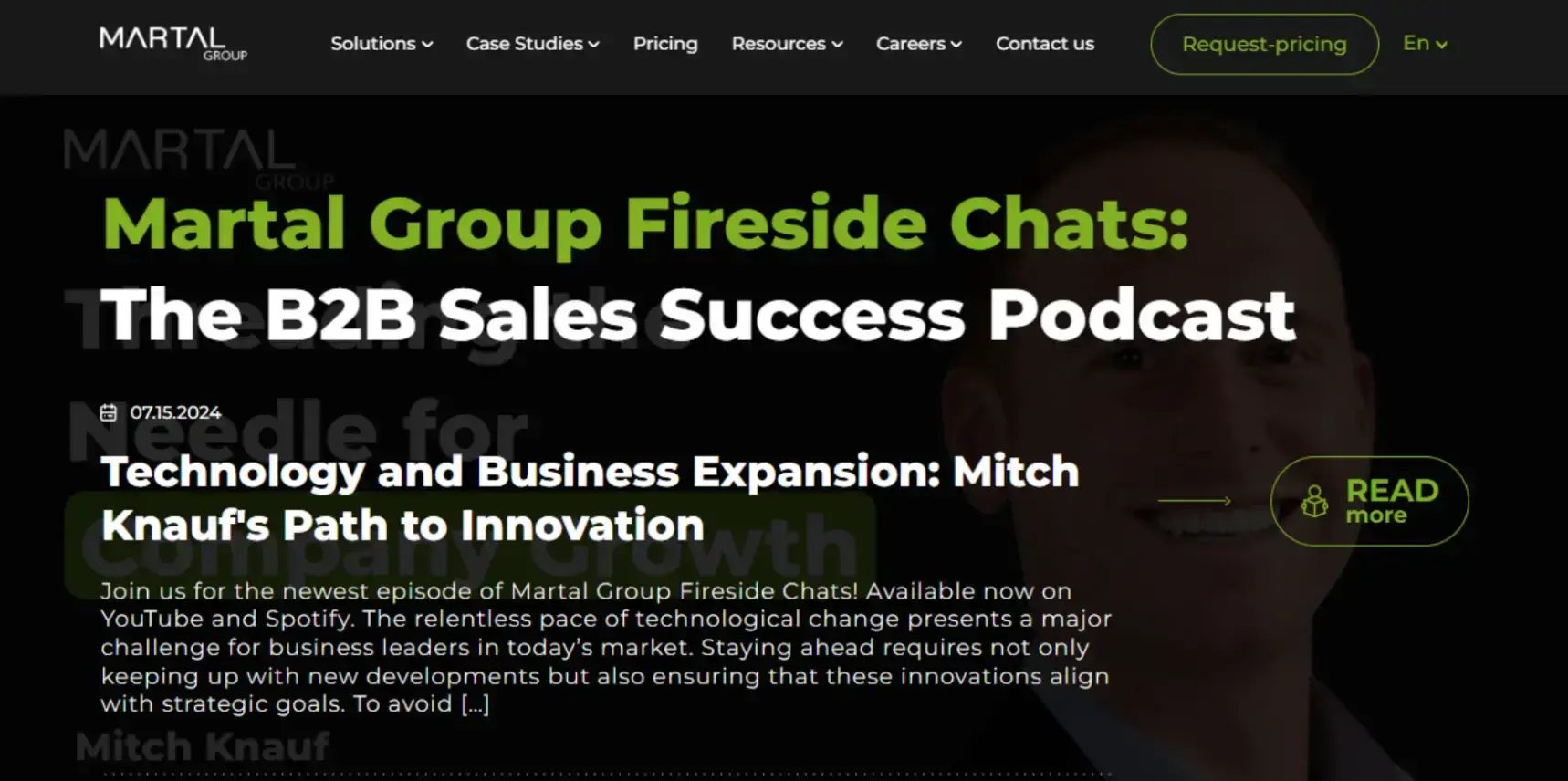
Source: Martal Group
Their marketing efforts are exemplary and they make the entire process easier by offering perks like an ROI calculator that helps you see how partnering with them can help you.
They also have several resources and case studies to prove their success with other clients.
5. U Shaped Marketing Attribution
It is also known as position-based marketing attribution. It gives the most value to the first touchpoint and the last touchpoint in a customer's journey, with the remaining credit distributed evenly among the interactions in between.
This approach considers the influence of initial brand discovery and the final decision to convert while still recognizing the contributions of mid-funnel touchpoints.
You typically assign 40% of the credit to the first and last touchpoints and distribute the remaining 20% evenly among the interactions in the middle.

However, this approach doesn’t work best for companies that depend heavily on content marketing, like Noobpreneur, a magazine for small business owners.
If you come across it through a Facebook or LinkedIn ad, you are likely to scroll past it.
But imagine if you find it through a blog on marketing tips for your small business. This article piques your interest, and you spend time exploring their website further.
A few days later, you listen to a podcast episode featuring a successful entrepreneur discussing how they used specific marketing tactics from Noobpreneur to grow their business.
It boosts your confidence in the value of Noobpreneur’s content, and you visit their site again for more tips.
Finally, after receiving a retargeting ad, you subscribe to their newsletter.
In this case, the middle touchpoints clearly played a much bigger role than the first and last ones. Hence, using a U-shaped attribution model will be ineffective.
6. Custom Marketing Attribution
Unlike standard marketing attribution models, custom marketing attribution lets you define your own rules for how credit is distributed across different touchpoints in the customer journey.
You create a model that accurately reflects the impact of each interaction. This often involves setting specific weights for each touchpoint based on its role and importance in driving conversions.
For example, to tailor attribution models to their unique contexts, consider Slidebean's pitch deck examples to see how you can set up these for different business types.

It supports data-driven decision-making by providing highly relevant insights into your business's unique context. It also allows for adjustments as customer behavior and marketing strategies evolve so the model remains relevant and effective.
However, it also poses the following challenges:
- It requires a deep understanding of the customer journey and advanced analytics capabilities to develop and maintain.
- It can be time-consuming and require significant resources to implement and adjust.
- It needs significant data collection to assign weights accurately.
eCommerce businesses should use this model because they often have complex customer journeys with multiple touchpoints. Use generative AI tools like Manifest, built especially for eCommerce stores, to analyze customer interactions and their importance in driving conversions.
Other businesses that should use this model are:
- B2B companies
- Omnichannel retailers
- Financial services
- Subscription-based businesses
- High-value and luxury goods
Google Analytics allows setting custom rules in its marketing attribution feature.
You can also use Excel or statistical software to calculate weights. You’ll need expertise in advanced statistical models to perform this step.
Because this can get complicated, hire a digital marketing expert to help with accurate implementation and analysis.
5 Common Challenges of Marketing Attribution
As you explore these common challenges, take a moment to assess how each one applies to your current marketing strategies and see how you can avoid or fix them.
A. Tracking Across Devices
Customers often interact with your brand using multiple devices, making it difficult for even the most advanced attribution tools to track their journey accurately.
This issue is especial


